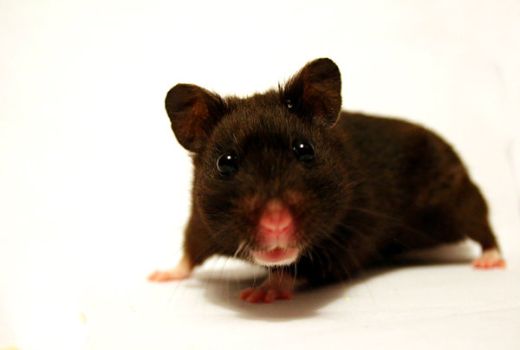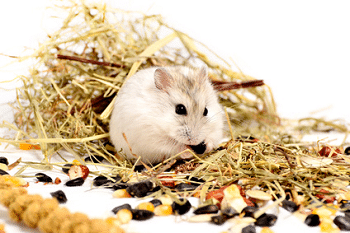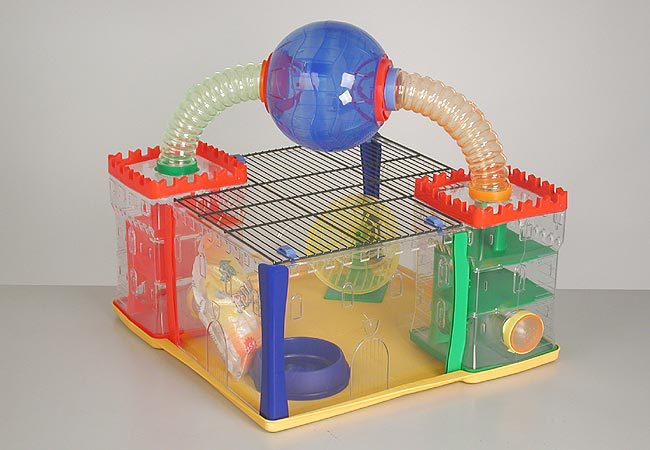
How to care for a hamster at home: rules and conditions of detention

Hamsters have become famous as the most unpretentious pets. This is not entirely true: rodents require a responsible attitude. If you know in advance how to care for a hamster at home, this will prolong the life of the animal, and the owner will avoid disappointment and dissatisfaction due to deceived expectations. In this age of accessible information, it is enough to use the Internet to read everything about hamsters.
Contents
Habitat
Care for hamsters at home begins with the purchase and arrangement of the cage with all the necessary equipment. But the organization of hamster life does not end there. The animal in a confined space is completely dependent on the owner. Care must be taken to maintain a comfortable temperature in the room all year round.
It does not matter at what temperature hamsters live in nature, at home it should be 20-24 C.
The cage is protected from sunlight, and in hot climates, it is recommended to equip the room with air conditioning. The hamster’s cage should not be placed close to the heater.
The air should be fresh and clean, free of harsh odors and smoke. Airing the room, beware of creating drafts.
Rodents do not tolerate noise well, so do not turn on the TV, music or loud household appliances near the cage.
A hamster cannot be awakened during the day, it is good if there is a house in the cage so that the pet can hide. Children should be taught how to properly care for a nocturnal animal, and be prepared to endure noise at night.
How to care for hamsters: daily care
Feeding

The hamster is fed 1-2 times a day, usually in the evening. The basis of the diet is dry food, but it is very important that the pet also receives juicy and protein foods. You should carefully study the list of prohibited and permitted products, otherwise the animal may get indigestion or even die.
Taking care of hamsters is often entrusted to children: watching them during a meal is very interesting. Small pieces of vegetables, fruits can be prepared in advance.
Pet stores have a rich selection of treats for rodents, but it is better to choose not sweet, without honey and other substances harmful to the hamster. Dried dandelion roots, millet spikelets are a great option for grinding down ever-growing incisors.
The pet is provided with fresh drinking water. Even in a closed drinking bowl, it is recommended to change the water every day.
Maintaining cleanliness
Many are interested in how to care for hamsters so that there is no unpleasant smell from the cage. In order for the pet to be healthy, and not too “fragrant”, it is very important to keep it clean. Every day, the remains of food that can deteriorate are removed – rotting fruits or stale meat are dangerous for the owner of the pantry.
The bottom of the cage should be generously covered with filler. Previously used sawdust, but now the most popular are corn and cellulose fillers. The litter not only absorbs urine, but also allows the animal to dig, make hiding places.
It is necessary to clean up after the hamster daily, removing the soaked filler and adding fresh filler instead. The animals are clean and most often relieve themselves in the same place (“toilet corner”). And general cleaning with a complete replacement of the filler and washing of the cage is not required so often: 3-4 times a month. Excessive zeal in this matter will lead to a nervous breakdown in the hamster.
Communication

Hamsters are far from the most contact rodents, because in nature they live strictly alone. At home, the maintenance of a hamster should also be single, if there are several animals, then there should be several cages. Such a pet also does not seek to communicate with the owner, so you will have to spend a lot of time taming an independent rodent.
There are certain rules of communication, if they are not followed, the hamster will show fear and aggression, annoying the owner. In the first days after buying the animal, it is better not to disturb him at all, no matter how much you want to cuddle a fluffy lump. For about a week, he will get used to the new house, and at the same time to the voice and smell of the owner. At this stage, it is recommended say the pet’s name while feeding.
Domestic hamsters differ little in temperament from wild counterparts, they must be patiently accustomed to hands so that communication brings joy to both the owner and the pet. With hamsters, the main remedy is food reinforcement – you need to teach the baby to take a treat from the palm of your hand. Gradually, the rodent will get used to the hand, then it can be pulled out of the cage. Care must be taken when handling the animal – a tiny animal can be injured if it jumps out of your hands or is squeezed too tightly. It is safest to clasp it with your palms, forming a “house”.
Contraindicated:
- wake up the animal
- take from above, from the back (association with a predator attack);
- make sudden movements (even in case of a bite, you need to remain calm).
Hamster care should include daily socializing. If you do not pick up a pet for a long time, a “rollback” will occur, and taming will have to start over. Contact should occur at the time of activity of the animal (in the evening).
Ensuring activity
Keeping hamsters in tiny cages or a three-liter jar is cruel to an animal that runs several kilometers every day in nature. It is not for nothing that their home is equipped with a running wheel. Caring for hamsters may include providing them with leisure time. The owners equip entire playgrounds, labyrinths and tunnels for curious rodents.

Despite the need for movement and diversity, you can let your pet out for a walk around the apartment only in a walking ball. Otherwise, the hamster at home is in mortal danger – it can get stuck, be crushed / pinched by the door, fall, fall into the pan, eat a poisonous plant, gnaw through the wire under electricity. Catching a pet can be very difficult.
You can not organize a walk on high surfaces (table, sofa). All hamsters come from the flat steppes, they do not understand and are not afraid of heights. There is a high risk that the pet will fall.
Is it possible to walk a hamster on the street
Out of the best of intentions, some owners tend to give their pet time in nature. But a domestic hamster from such a walk will receive not pleasure, but severe stress. Not many people think about the fact that a pet can become seriously ill.
In nature, predators lie in wait for the animal: dogs, cats, rats, crows. A nimble kid can easily run away and get lost forever. The outdoor environment is more aggressive and unstable: the hamster can become cold, especially if the grass is wet, or overheat in the sun. The ground and grass are often parasitized and are a source of infection due to wild rodents.
Conclusion
A hamster often becomes the first pet of a child, since the care and maintenance of the animal at home is not too burdensome. But it is also necessary to take proper care of it. It is good to buy a rodent in a professional nursery: an experienced breeder knows everything about hamsters, and will gladly tell you how to care for them. Often, along with a young hamster, the buyer receives a brief instruction. If the pet was bought on the market, you can find information on how to keep a hamster on the Internet or specialized literature.
Hamster care and maintenance at home
4.6 (92.23%) 422 votes





